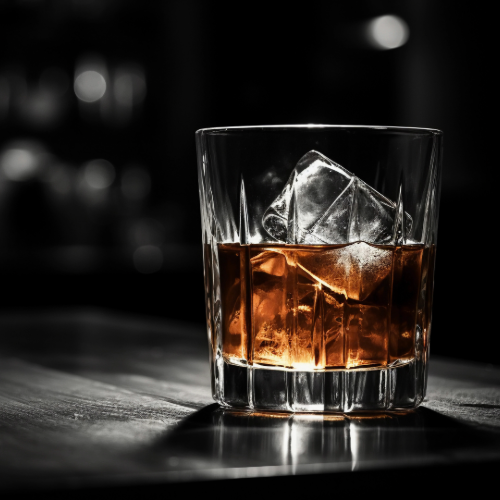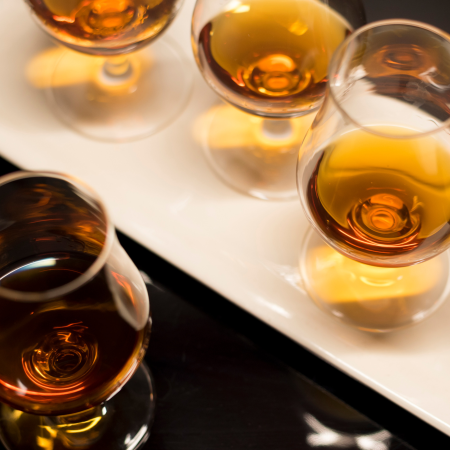Fine spirits have been enjoyed by humanity for centuries. Whether it’s the rich complexity of cognac, the sweetness of rum, or the fiery notes of whiskey, these beverages have become a staple of high-end dining, social events, and personal indulgence.
However, these spirits didn't just magically appear on our shelves. The process of creating them has evolved over time, with each step contributing to the unique flavors and characteristics that make each type of spirit so special. In this article, we will explore the origins and storage of rum, cognac, and other fine spirits, to gain a deeper understanding of the art behind these exquisite drinks.
Origins of Rum
Rum originated in the Caribbean, where sugarcane was abundant. Early rum production involved fermenting molasses, a byproduct of sugar production, and then distilling the resulting liquid to create a potent spirit. As the popularity of rum spread throughout the world, production methods evolved, and the beverage became increasingly refined.
Today, rum is produced in a variety of styles, including light, gold, and dark rums, with each type possessing its own unique flavor profile. Some of the most popular rum-producing regions include Cuba, Jamaica, and the Dominican Republic.
Storage of Rum
The storage of rum plays a crucial role in the development of its flavor. Rum is typically aged in oak barrels, which contribute to its rich, complex flavor profile. The type of barrel used, the age of the rum, and the climate in which it is stored all play a role in the final product.
Dark rums, which are aged for longer periods, often have notes of caramel, vanilla, and oak, while lighter rums, which are aged for shorter periods, have a smoother, more delicate flavor.
Origins of Cognac
Cognac is a type of brandy that originated in the Cognac region of France. The production process involves distilling wine made from specific grape varieties, including Ugni Blanc, Colombard, and Folle Blanche.
Cognac production dates back to the 16th century, and the spirit was originally used for medicinal purposes. However, it wasn't until the 18th century that cognac became a popular luxury beverage, enjoyed by the French aristocracy.
Storage of Cognac
Cognac is aged in oak barrels for a minimum of two years, with some varieties aged for several decades. The aging process is crucial to the development of the spirit's complex flavor profile, which is characterized by notes of vanilla, oak, and dried fruit.
The type of barrel used also plays a significant role in the final product. Cognac is typically aged in Limousin oak barrels, which impart a distinctive flavor to the spirit.
Storage of Fine Spirits
While the storage of rum and cognac are essential to their flavor, the same can be said for other fine spirits, such as whiskey, tequila, and gin. The storage process of each spirit is unique, with factors such as the type of barrel used, the aging process, and the climate all playing a role in the final product.
For example, whiskey is often aged in charred oak barrels, which contribute to its smoky flavor profile, while tequila is aged in barrels made from a variety of woods, including oak, cherry, and pine, each contributing to the spirit's unique taste.
Conclusion
The world of fine spirits is a complex and fascinating one, with each type of beverage possessing its own unique flavor profile and production process. Whether you're sipping on a smooth cognac or enjoying the sweetness of rum, the art of spirit production has a rich history, and each step of the process contributes to the final product. From the origins of rum and cognac to the storage of various types of spirits, there is much to learn and appreciate about these exquisite beverages.
In addition to the storage and production process, the quality of the raw ingredients used in the production of fine spirits is also crucial. For example, the type of grapes used in the production of cognac, or the quality of the sugarcane used in the production of rum, can significantly impact the final product's flavor and character.
The art of producing fine spirits has also evolved over time, with distillers experimenting with new techniques and technologies to create new and exciting flavors. Some distillers even age their spirits in non-traditional barrels, such as wine or sherry casks, to impart unique flavor profiles.
The origins and storage of rum, cognac, and other fine spirits are fascinating topics that offer a glimpse into the rich history and complex production process of these beloved beverages. Whether you're a seasoned connoisseur or a curious novice, understanding the art and science behind the creation of fine spirits can enhance your appreciation of these exquisite beverages.








